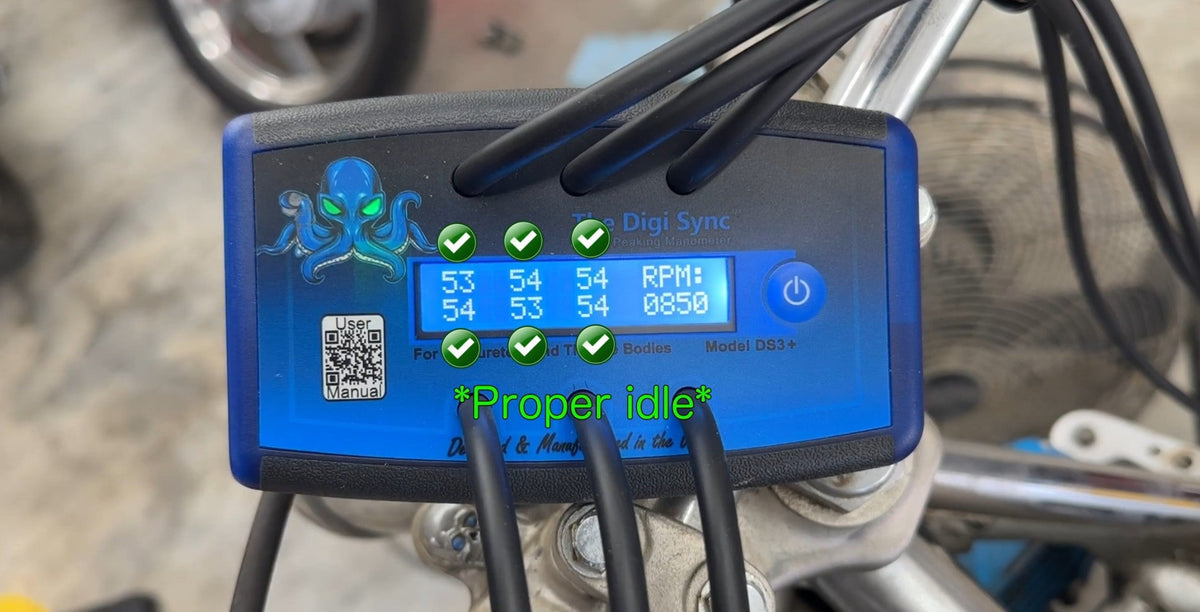

Why Carb Synchronization Actually Matters
First things first: if your engine is sputtering, bogging, or just feels off, chances are your carburetors are out of sync. And no, tapping them with a wrench and hoping for the best isn’t a tuning method. Synchronizing your carburetors ensures each cylinder is pulling its fair share of air and fuel, giving you smoother throttle response, better fuel efficiency, and a ride that doesn’t feel like it’s trying to buck you off at 3,000 RPM.
Using a carb sync tool properly is one of those small-but-mighty maintenance tasks that can make or break your ride’s performance. Skip it, and you’re basically running a three-legged race with four engines. Do it right, and your bike will purr like a caffeinated kitten in full Zen mode.
Whether you’re syncing carbs on a motorcycle, ATV, or a classic twin that’s been a little cranky lately, the process is mostly the same: connect the carburetor sync tool , warm up the engine, and fine-tune the idle screws until everything is in harmony. You don’t need a degree in mechanical engineering—just a little patience, the right tools, and the good sense not to rev the engine like a maniac mid-adjustment.
Let’s break down how to actually use a carb sync tool, get your engine running like it should, and stop wasting fuel while looking like a MotoGP reject at every red light.
Wait, What Is a Carb Sync Tool?
A carb sync tool — aka carburetor synchronizer — measures the vacuum pressure across each carburetor in your multi-carb motorcycle engine. Your goal? Make those vacuum readings match. No drama. No hissy fits between cylinders.
There are a few types of sync tools out there:
Dial gauges : The analog grandpas of the syncing world. Wiggle like they’ve had too much coffee.
Manometers: Use fluid (sometimes mercury, sometimes DIY jank). Accurate but messy.
Digital carb sync tools: Like Digi Sync. Clean. Precise. Real-time readings that don’t lie or lag.
Spoiler alert: we’re biased. But seriously, once you go digital, you don’t go back.
Why Bother Syncing at All?
If your motorcycle idles like it’s gasping for air, vibrates like a jackhammer, or makes your throttle feel like a dead zone—chances are your carbs are out of sync.
Syncing Fixes:
Rough or uneven idle
Delayed throttle response
Engine vibration
Poor fuel economy
That "ugh" feeling every time you twist the throttle
It also helps your engine run cooler, cleaner, and longer. Your bike deserves better. You do too.

When Should You Sync Your Carbs?
Use a carb sync tool when:
You’ve just rebuilt or cleaned the carbs
Your bike feels sluggish, vibey, or just plain weird
You’ve noticed a dip in fuel efficiency
You’re doing a 5,000–10,000 km maintenance interval
You added new intake boots or anything that could mess with airflow
Basically, if it’s been a while and your engine feels cranky, it’s time.

What You’ll Need to Sync Your Carbs Like a Pro
Before you get elbow-deep in vacuum hoses, make sure you’ve got:
A motorcycle carb sync tool (preferably a Digi Sync, unless you love chaos)
Basic hand tools (screwdrivers, wrenches)
A warm bike (engine at operating temp!)
A clear, safe, ventilated workspace
Vacuum port adapters (depending on your bike)
Optional: a fan, gloves, eye protection, and a playlist to drown out your neighbor’s leaf blower.

How to Use a Carb Sync Tool (Step-by-Step)
1. Warm That Beast Up
Start your bike. Let it idle until it hits operating temperature. Cold syncing is for amateurs—and gives you garbage readings. Don’t skip this.
2. Locate Your Vacuum Ports
Usually near the intake manifolds. You might need to unscrew some caps to get to them. If you don’t see any, don’t panic—you might need to install adapters. Check your bike’s service manual if things start looking unfamiliar.
3. Hook Up the Sync Tool
Attach the vacuum hoses from your sync tool to each carb’s vacuum port. On four-cylinder bikes, you’ll use four hoses. On twins, just two. Secure those connections tight—vacuum leaks = lies.
4. Start the Engine
Fire it up again. You’ll see each carb pulling a different amount of vacuum. That’s your cue.
5. Adjust the Sync Screws
Using a small screwdriver, tweak the sync screws between the carbs. These control the throttle plates and how much air flows through. Make tiny adjustments. Then wait. Let the readings settle. Then adjust again. It’s a dance, not a brawl.
6. Recheck, Rev, Repeat
Give it a few light revs. Let it settle. Check the readings. You may need to go back and forth a few times until everything lines up beautifully.
7. Shut Down and Clean Up
Turn off the engine
Disconnect the sync tool
Cap the vacuum ports
Put your tank or bodywork back together
8. Take It for a Ride
Now’s the fun part. Fire it up and go for a spin. You should feel the difference instantly—smoother idle, better response, less shaking, and a grin under your helmet.
Common Carb Sync Mistakes (Don’t Be That Guy)
Cold engine syncing : Garbage in, garbage out. Always warm up first.
Adjusting too fast : Give the readings a second to stabilize. Breathe.
Incorrect hose placement : Yes, that matters.
Skipping maintenance altogether : Your bike deserves better. So do your neighbors who hear it idle like a lawnmower.
Bonus Tips for Better Results
Sync your carbs in a ventilated area. No one likes carbon monoxide poisoning.
Use a fan if your engine’s running hot mid-tune.
Always wear eye protection with mercury tools (if you’re still using those relics).
When in doubt, check your service manual . Seriously. Don’t wing it with tuning screws.
The Payoff: Why Syncing Is Totally Worth It
Syncing your motorcycle's carbs with a proper carburetor synchronizer (ideally, a digital one like Digi Sync) delivers real, immediate improvements:
Smoother idle and performance
Better fuel economy
Crisper throttle response
Less engine wear
Happier rides and quieter engines
Plus, it’s oddly satisfying when all the numbers line up. Like motorcycle Sudoku with horsepower.
Final Carb Sync Thoughts
If you’ve made it this far, you’re clearly someone who cares about your bike. That’s good, because syncing your carbs is one of the simplest, smartest things you can do to keep it running strong.
With a solid carb sync tool (hey, we know a guy), a bit of patience, and this guide, you’re ready to tune like a pro—without needing to bribe your mechanic with beer.
Your bike will thank you. Your throttle will finally do what you want. And your ride will feel just right
